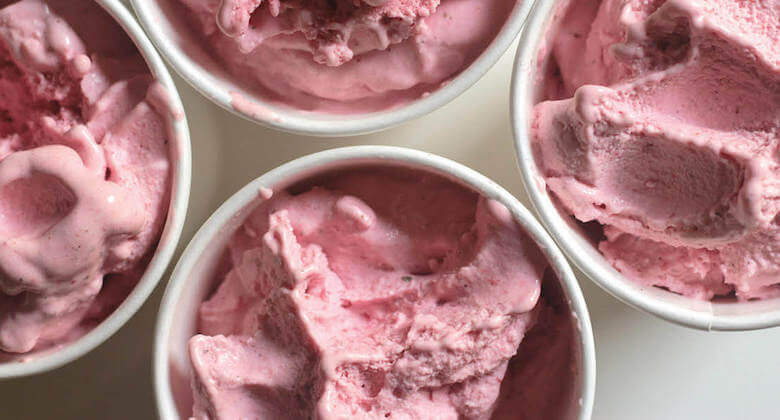
Forage, Harvest, Feast: A Wild-Inspired Cuisine is not for the 30-minute-mealers. Let’s just get that out of the way from the start.
The book—by longtime Edible contributor, blogger behind 66 Square Feet and New York forager Marie Viljoen—is full of recipes that will deny the reader’s craving for instant gratification. Instead, Forage, Harvest, Feast presents an argument for taking one’s absolute time. It’s food at its slowest and most local. The foraging and the harvesting of the ingredients take time and effort and significant knowledge. The feast is a payoff worth waiting (and working) for.
Read more: How to Make Vermouth with Foraged Ingredients
You might, for example, be rewarded for your efforts with fir- and juniper-cured duck breasts, hot and sour soup with day lilies and chicken of the woods, cattail blinis, a spicebush and rhubarb knotweed jelly roll. Some will find this menu inspiring and energizing. Others—especially those among us who aren’t already foragers or gardeners—may find themselves awed and possibly even terrified at the prospect of finding a cattail at all, let alone a cattail worth eating. Viljoen’s advice, given in the book’s introduction: “Read now, and you will know what to forage, or grow, later.”

Some of the recipes read like incantations; there are few substitutions given for some of the more elusive ingredients and even fewer shortcuts. I began to wonder what my pantry would look like stocked with wisteria vinegar and juniper sugar, sweetfern salt and spicebush essence; what I might make with a stash of prickly ash paste or American burnweed and lime butter in the refrigerator. This is all admittedly challenging for me to imagine. Without these “staples” already in my arsenal, it’s hard to know where to begin.
Forage, Harvest, Feast advocates for the most local kind of eating, the slowest kind of food—the kind that requires really knowing where it’s coming from. You have to look, to get down on your hands and knees, to do your research, play a much more active role in consuming than most of us are used to. You won’t find most of these ingredients at any store. You can’t even talk to your farmer about them. Your farmer probably devotes a not-insubstantial amount of time to weeding them out of their crop beds.
Read more: Foraged Brooklyn Bitters
But some of the featured ingredients are becoming more and more available and popular—I found and happily ate lamb’s quarters and nettles and ramps from the farmers market this spring; I wish I’d known about Viljoen’s recipes for tender, buttery lamb’s quarter gnudi. Others, like sumac and juniper, are available in some forms on the spice shelves of specialty grocery stores. The rest? Viljoen hopes we’ll be encouraged to go out, kindly and curiously, into our wild spaces and find them. And when we do, we’ll have the resources to cook them.
Viljoen’s recipes would be inventive and inspiring even sans pokeweed—a sort of cross between comfort food and high-end Scandi roughage and back-to-the-land enthusiasm, and it’s thrilling to realize that it pretty much all comes from here, from New York City. It makes you want to look more closely at everything as you’re walking around—and reminds you that the city has a whole world to it beyond acrid, sweaty subway commutes and Wall Street and whatever restaurant is coolest at any given moment. If only the rest of us, like Viljoen, had been looking all this time!

These recipes are from Marie Viljoen’s Forage, Harvest, Feast: A Wild-Inspired Cuisine (Chelsea Green Publishing, 2018) and are reprinted with permission from the publisher.
Juniper and Strawberry Frozen Yogurt
Makes 1 quart (1 liter)
Juniper gives a distinctly grown-up undertone to the first ripe, sweet, farmers market strawberries. This ice cream is best right out of the ice cream maker, where it reaches the perfect consistency after about 25 minutes. If you are storing it in the freezer, it freezes very hard, so take it out half an hour before serving to allow it to soften.
1½ pounds (680 g) very ripe strawberries
3 ounces (85 g) juniper sugar (recipe below)
6 ounces (170 g) regular sugar
3 cups (750 ml) Greek yogurt
1 cup (250 ml) half-and-half
Cut up the washed strawberries. Place them in a bowl with both sugars and let them sit overnight, covered. In a blender, puree the strawberries and sugar with any exuded juice until smooth. Transfer to a bowl and chill.
When the strawberry puree is cold, place the Greek yogurt in a bowl and add the half-and-half slowly, stirring until the mixture is smooth. Add the puree. Stir well. Transfer to an ice cream maker and churn until frozen, about 25 minutes.
Juniper Sugar
Makes 1¼ cups (310 ml)
Sugar made with freshly gathered juniper adds wild aroma to baking, marinades, cures (like gravlax and duck), slow braises or stews involving duck or rabbit or pork, and cocktails. I keep a supply in the freezer, where it remains as fresh as the day it was made for over a year.
¼ cup (¾ ounce/20 g) juniper berries
1 cup (7 ounces/198 g) sugar
Grind the juniper berries in a spice grinder until very fine—this is important, as larger pieces of seed may remain and be very hard on teeth. Transfer the pulverized berries (they will actually be moist) to a bowl and mix very well with the sugar. Store a small amount in an airtight jar or food-safe container, and freeze the rest for later use.



